This section presents an analysis of each of the basic strategies by which interactive storytelling might be achieved. The software document that produces interactive storytelling is called a “storyworld”. Here’s a quick summary of the basics. This is how I represent a story:
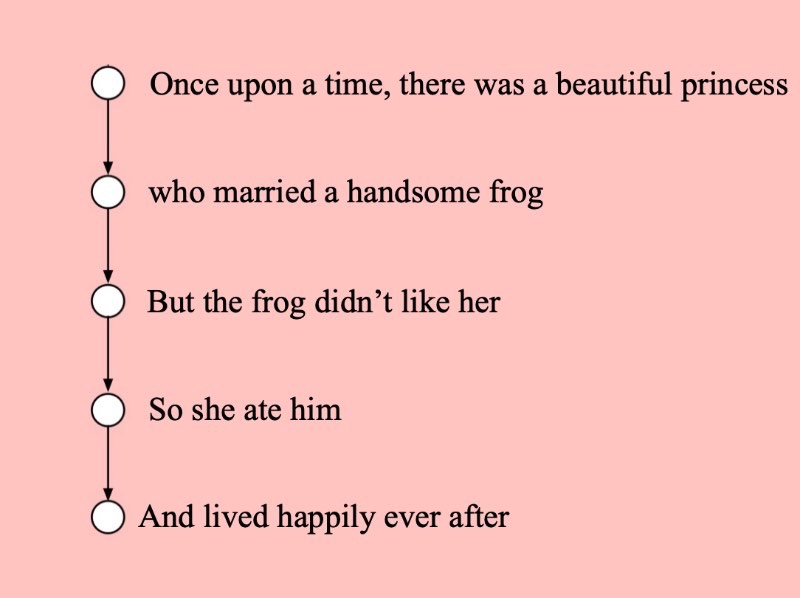
Now, interactivity requires that the player be able to make choices. The simplest possible choice is represented like so:
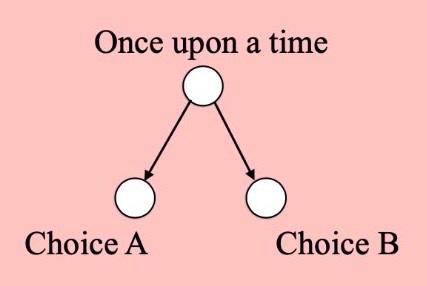
So, if we want to make a story interactive, we must supply branch points at each point in the story:
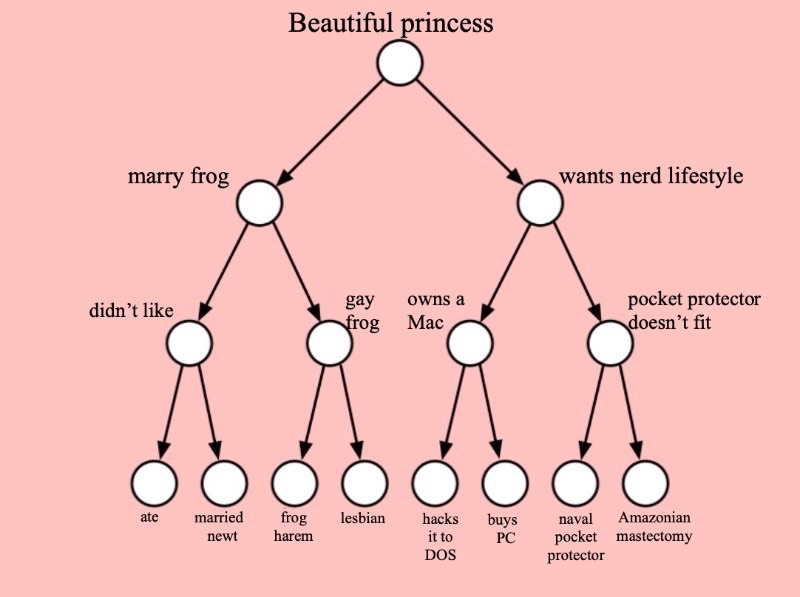
A single traversal of this tree yields a story:
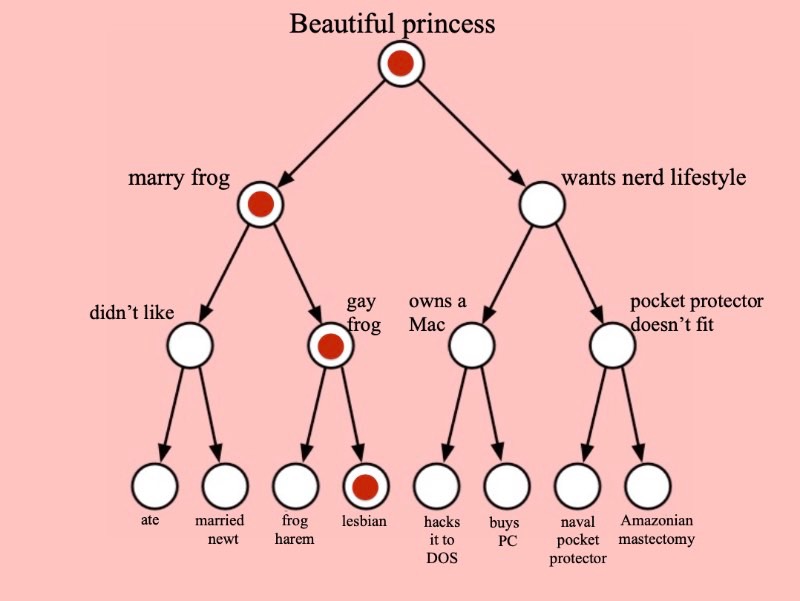
This looks pretty good, but only when small. If you want a story with just eight steps, the tree looks like this:
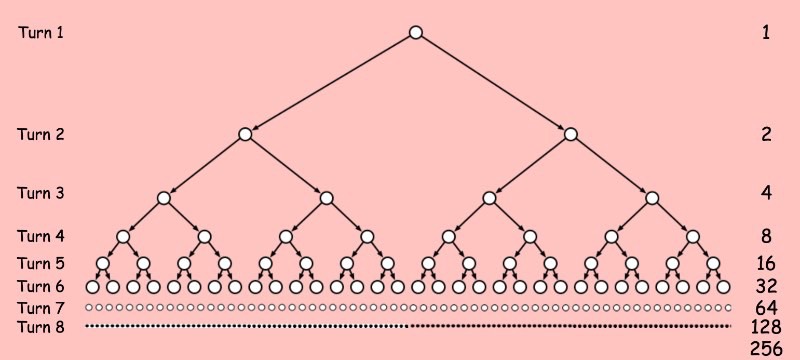
This is called the “geometric explosion”. I warned about it 30 years ago. People are still surprised when they realize how it works. So they come up with a stupid trick that I call “foldback”. It looks something like this:
Sure, the player gets a choice, but it really doesn’t make any difference in the outcome. This is fraudulent interactivity. So the next trick people try is to alternate the steps in the linear story with segments of a game, something like this:
This stunt has been around since the 1990s. It’s rather like a thaumatrope; it’s just an illusion of interactivity.
I call the next stunt “Kill ‘em if they stray”. The player has complete freedom to do anything he wants, but if he fails to follow the linear storyline, the game kills him:
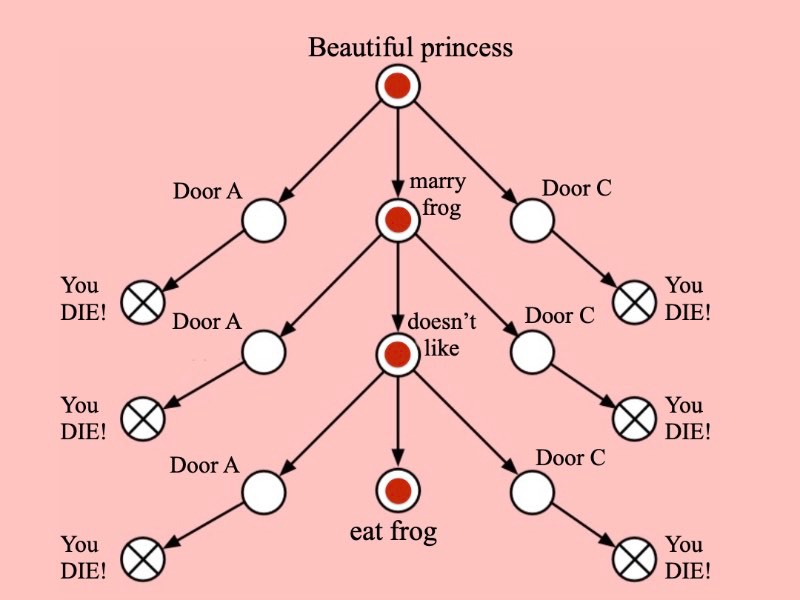
This stunt was first used in the coin-op game Dragon’s Lair in 1983. It doesn’t work.
None of these stupid tricks work. So what DOES work? Each of the essays in this section will describe one major strategy.
Is Language-Based Interactive Storytelling Possible?
